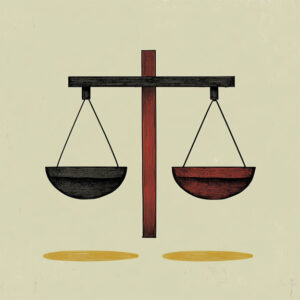 “All politicians are the same” is an oft repeated phrase that has a certain appeal. It is easy to think all politicians are corrupt, power obsessed liars. But a claim should not be accepted simply because it is tempting, there should be evidence for it. One stock way to “argue” that all politicians are the same is to make use of the false equivalence. While there are many forms of false equivalence, the focus here is on the fallacy of false equivalence.
“All politicians are the same” is an oft repeated phrase that has a certain appeal. It is easy to think all politicians are corrupt, power obsessed liars. But a claim should not be accepted simply because it is tempting, there should be evidence for it. One stock way to “argue” that all politicians are the same is to make use of the false equivalence. While there are many forms of false equivalence, the focus here is on the fallacy of false equivalence.
In this context, the fallacy of false equivalence occurs when it is concluded, without adequate justification, that two things are the same because they have some quality or qualities in common. More formally, the fallacy has the following structure:
Premise 1: X and Y are similar in respect to qualities P, Q, R.
Premise 2: X has quality Z (to degree D or quantity Q).
Conclusion: Y has quality Z (to degree D or quantity Q).
Those familiar with the inductive analogical argument will see the similarity between the two arguments. This is because a false equivalence can be taken as a type of fallacious analogical argument: an unjustified inference that because two things are alike in some ways, they must be alike in the specified way.
In the case of the false equivalence, the error is that even if the two things do have qualities in common, there is not adequate evidence for the conclusion of equivalence. There are various reasons the inference can fail, even assuming the premises are true. One is that while the two things do share qualities, these qualities are not relevant to their being equivalent in the specified way. For example, the fact that Hitler and Ronald Reagan were both male, human, and democratically elected does not suffice to show that they were both genocidal fascists.
Another is that while the qualities can be relevant to the claimed equivalence, there can be a difference in the degree in which the properties are possessed. For example, consider two fictional people. Sam, while drunk as a teenager, once kissed another person while in a relationship and sometimes lies about taking the last cookie in the breakroom at work. Ashley has cheated (sexually) on many partners and routinely lies about stealing money from work. While both have cheated, stolen, and lied, it would be absurd to claim that they are equally bad as their misdeeds are very different in degree.
A third is that while the two things might share qualities, the number of relevant occurrences of those qualities can be significantly different. For example, a person who rarely lies and a person who constantly lies would both be liars, but they would not be equivalent.
The way to avoid falling victim to this fallacy is to question whether the reasons given as to why the two things are equivalent suffice to support this claim. This would involve considering whether the qualities used to argue for the equivalence are possessed to the same degree or number by the two things. While the two things need not be identical, a claim of equivalence does require showing that they are close enough. One should, as always, also determine whether the premises are plausible or not.
It should be noted that while the usual goal of a false equivalence is to “argue” that one thing is as bad as another, they can also be used to “argue” that one thing is as good as another. The basic error is the same, though. For example, one person who has done a few minor good things might try to draw a false equivalency to a person who has done similar, but far more and far better things.
It should also be kept in mind that there can be good arguments for equivalence. A good argument of this sort would have the same structure as a false equivalence; the difference would lie in that the qualities would be shown to be of an adequate relevance, degree, and number to support the conclusion of equivalence. These would be, in essence, strong analogical arguments.
Generally, false equivalence benefits the worse of the two things being compared and is detrimental to the better thing. This is because the worse thing is presented as being as good as the better thing and the better thing is presented as being as bad as the worse thing. A such, it is hardly surprising that false equivalences are generally used by the worse of the two things or by their defenders or supporters. In my next essay I will look at the false equivalence as a political weapon.

False Start:
Another blog today raised an issue about the history of philosophy being a problem. I did not understand that. Such claim would be akin to saying history of anything is a problem. Which makes no sense at all. Blogs raising such questions, and, offering no portal for comment(s) seem mundane. To me.
Hmmmm…Isn’t false equivalence, more or less, another incidence of fallacy? Certainly seems so.